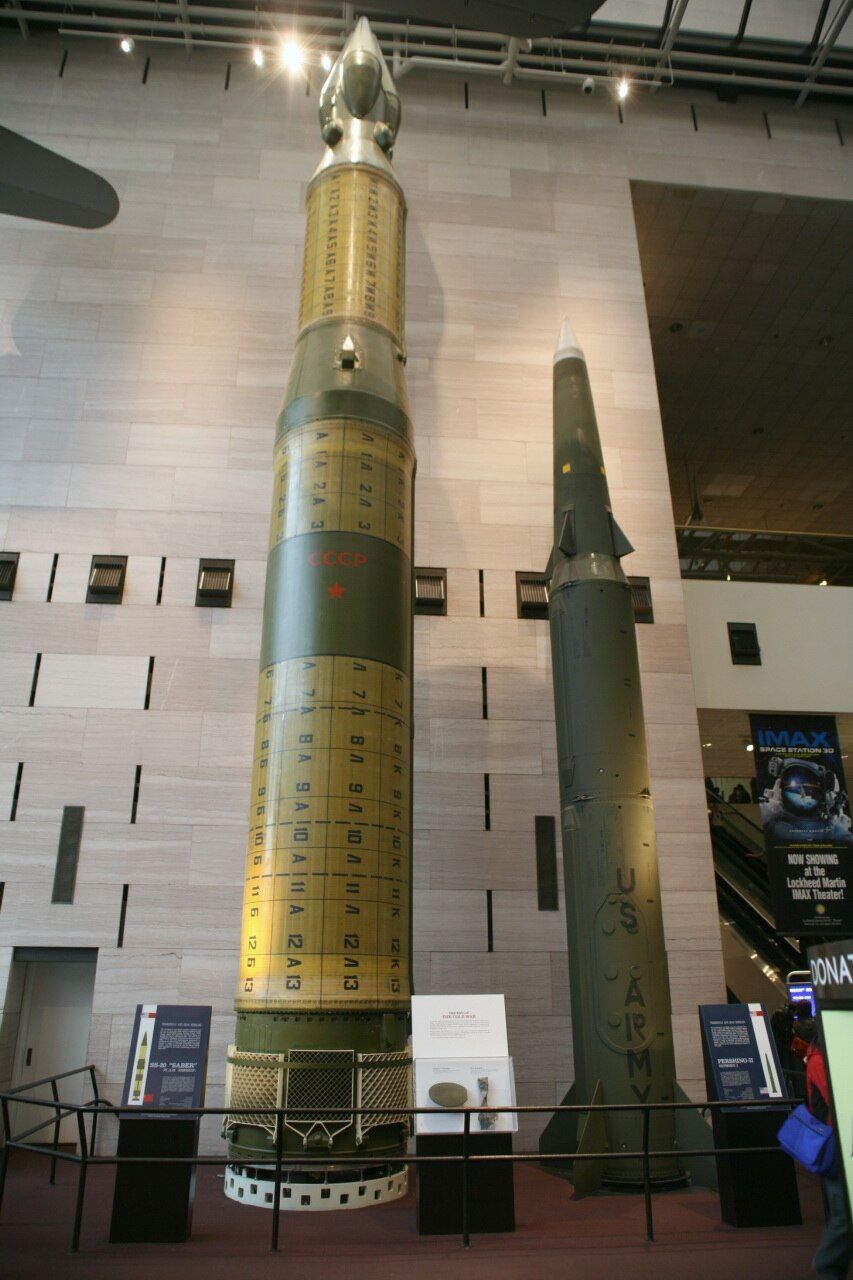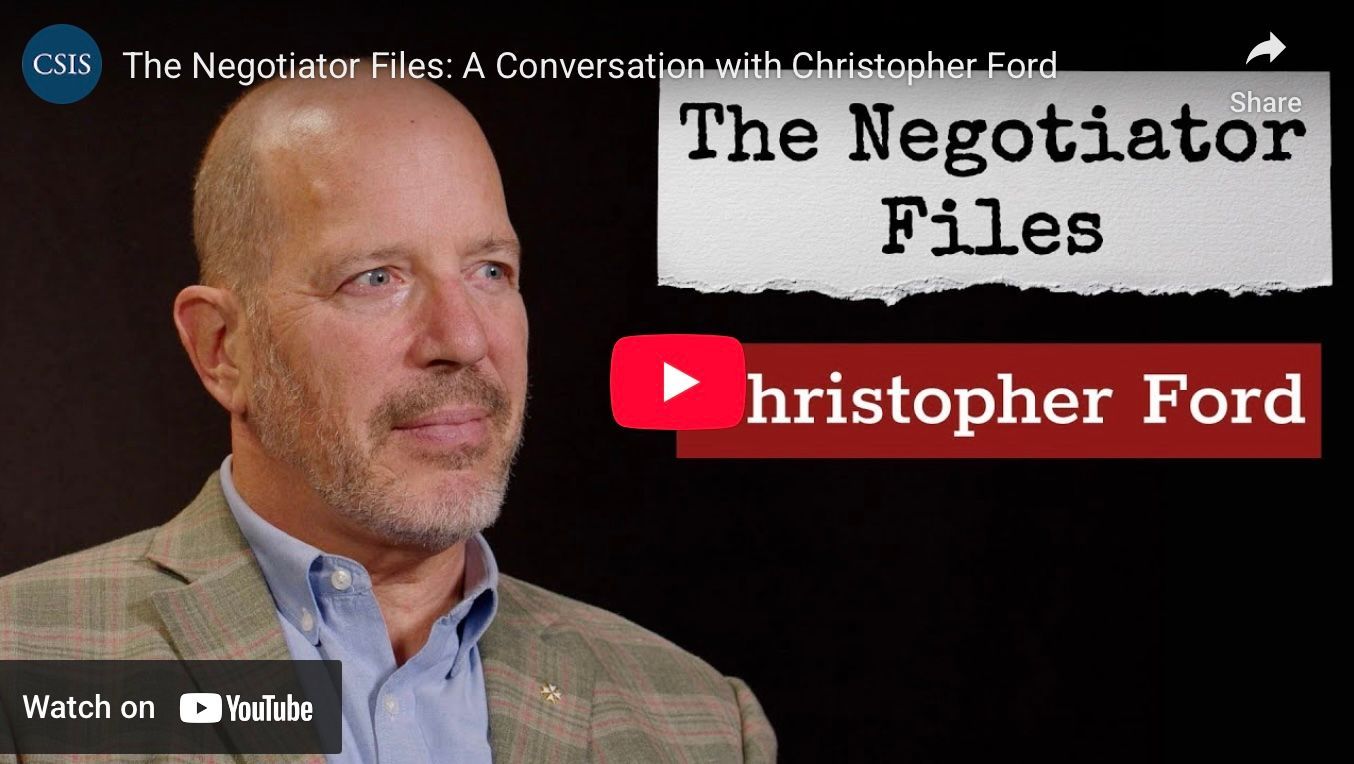Implementing CAATSA Section 231 Diplomacy
Chairman Crapo, Ranking Member Brown, and Senators, thank you for inviting us.
I represent the Bureau of International Security and Nonproliferation (ISN), and I am pleased to help explain how we are employing the various sanctions tools Congress has given us vis-a-vis the Russian Federation and the various malign activities of the Putin regime. For my part, I will be focusing principally upon Section 231 of the Countering America’s Adversaries Through Sanctions Act of 2017 (or CAATSA), because implementation of that section has been entrusted to my bureau at the State Department.
But if I might, Mr. Chairman, before I talk about our approach to implementing Section 231, I’d like first to put my bureau’s work in this respect into a broader context.
I. Our Philosophy of CAATSA Section 231 Implementation
At the ISN Bureau, our traditional focus is upon the myriad threats and policy challenges facing the United States from the spread of weapons of mass destruction (WMD), to delivery systems, and advanced conventional weapons. These issues are of enormous importance to national and international security, of course, and ISN’s eponymous role in “international security” has been seen primarily through the nonproliferation prism.
But “international security” can – and does – encompass more than just nonproliferation, and one of our roles is to implement sanctions under Section 231 of CAATSA. In passing that legislation last year, Congress made very clear its intention that the purpose of the Russia sanctions provisions therein was to pressure Russia to change its behavior with respect to a wide variety of malign acts – including Vladimir Putin’s effort to interfere in the 2016 U.S. presidential election. We have heard that message loud and clear.
Significantly, there is more to this than a much-deserved response to malign acts and deterrence to such provocations in the future – though those are, of course, laudable goals that we fully support, and which we are using CAATSA to help bring about. As I see it, these sanctions tools also have value in better equipping us to play a role in broader arenas of great-power competition and geopolitical competitive strategy.
The new National Security Strategy calls out “the contest for power” as “[a] central continuity in history,” and warns about challengers – specifically, “the revisionist powers of China and Russia, the rogue states of Iran and North Korea, and transnational threat organizations” – that “are actively competing against the United States and our allies and partners.”
Similarly, the new National Defense Strategy observes that “[t]he central challenge to U.S. prosperity and security” today is “the reemergence of long-term, strategic competition.” “It is increasingly clear,” that document states, “that China and Russia want to shape a world consistent with their authoritarian model – gaining veto authority over other nations’ economic, diplomatic, and security decisions.” Indeed, the NDS notes that “[b]oth revisionist powers and rogue regimes are competing [with the United States] across all dimensions of power.”
This is the mindset that we also bring to approaching CAATSA sanctions against Russia. Russia has undertaken a campaign of malign activities in its attempt to compete with the United States and our Allies and partners. The array of sanctions the United States has imposed against Russia, and those that materially support its malign activities, respond directly to its aggressive action against our country, our Allies, and our partners.
And this is where CAATSA’s Section 231 comes into play. The threat of mandatory sanctions against individuals or entities that have engaged in significant transactions with the Russian defense or intelligence sectors can be so useful, but we need to use this powerful tool surgically – to excise the malignancy without damaging our very important foreign relationships. As we have been implementing Section 231, we began by emphasizing to our allies that transactions with the Russian arms industry could have consequences.
Firstly, these are the same arms that Russia used and continues to use in its aggression against Ukraine. Our implementation of the CAATSA sanctions reinforces this Administration’s unwavering commitment to Ukraine’s sovereignty and territorial integrity, including over Crimea.
Secondly – as Willie Sutton reportedly said when asked why he robbed banks – “that’s where the money is.” High-technology military equipment is one of the only competitive sectors of the Russian economy these days, and Moscow makes a great deal of money from selling arms abroad indiscriminately – be it to Iran or the Assad regime. These funds fuel the Kremlin’s malign activities, spread its malign influence, and support Russia’s development of newer, even more deadly weapons. Accordingly, if Russia is to feel pressure in response to its malign activities, it makes sense to go after these revenues – revenues that may also help offset the costs of developing newer, even more deadly weapons that threaten and undermine the security of the United States and our allies and partners.
More broadly, however, Russia also uses its arms transactions as a tool of geopolitical influence. For Russia, it isn’t just about money, but about the relationships that the arms trade creates for Moscow. Scaling back and shutting down Russia’s arms deals and deterring such transactions in the future strike directly at the Kremlin’s malign activities and influence that it seeks to exert in the international community.
That is our central philosophy behind Section 231 implementation. The broadest challenge, of course, is how to manage a relationship with Russia that has both important cooperative aspects and important points of disagreement. As the President and Secretary Pompeo have made clear, we seek to cooperate with Russia on subjects of shared interest wherever we can, because of course there are important shared interests on which it would be irresponsible of us not to cooperate. This was, for instance, well symbolized by the conference we held at the State Department on June 28 that brought together the United States, United Kingdom, and the Russian Federation as the Depository States of the Nuclear Nonproliferation Treaty (NPT), to commemorate the 50th Anniversary of that Treaty being opened for signature. For the occasion, the three foreign ministers of these Depository States issued a joint communique reaffirming their shared commitment to the NPT and the nonproliferation regime of which it is the cornerstone.
At the same time, the Department and my Bureau have not been shy about acting forthrightly in pushing back against Russian malign activities. The sanctions tools you have given the State Department, including CAATSA’s Section 231, are valuable elements of how this Administration is contributing to American success in responding to Russian aggression in this new era of great power competition.
II. A Record of Successes to Date
As we have dispatched our diplomats repeatedly around the world to spread word about Section 231 and encourage Russia’s arms clients to wean themselves from Moscow, we have had some notable successes to date. Most of these successes are ones about which it is not possible or advisable to speak in public, because most interlocutors who take action to reduce their exposure to Section 231 sanctions are not keen to publicize the fact. We very much wish to respect their sensibilities, because that’s how friends treat each other. We also want to honor these confidentialities because embarrassing partners who have done the right thing in reducing their Russian arms entanglements isn’t a good way to encourage others to follow suit – we are also cognizant of potential Russian retaliation against these interlocutors.
Nevertheless, though we can’t speak about them publicly, we have had real successes – in the form of something on the order of billions of dollars in announced or expected Russian arms transactions that have quietly been abandoned as a result of our diplomatic outreach about Section 231. That’s billions that Putin’s war machine will not get, and through which the Kremlin’s malign influence will not spread, and a slew of strategic relationships between the Kremlin and overseas partners that will not broaden and deepen. We’re proud of this record, and we’re working hard to run up the score further.
So effective has the threat of CAATSA sanctions been to date, moreover, that we have been able to do all this without imposing sanctions on a friend or partner state of our own. I urge you not to look at the scorecard as whether the United States has imposed sanctions. In this case, sanctions reflect our failure to turn off Russian arms deals. The time will come when we will have no choice but to impose sanctions, but we are keenly aware that Congress’ purpose in passing Section 231 was to pressure Russia and incentivize Russia to change its behavior, not to hurt U.S. friends and allies who might happen to purchase arms from Moscow.
III. S ix Principles for Implementation
Mr. Chairman, I will be happy to answer any questions you have about these matters – at least as best I can in an open forum. I am also very happy to participate in or send briefers for a closed session. Before I conclude, however, let me say a few more words about our approach to Section 231. In particular, I’d like to outline six principles that help guide our work:
- First, as I said earlier, the target of Section 231 sanctions is Russia , not the countries that happen to purchase arms from Russia. Our interlocutors and partners need to know that although CAATSA may compel us to have challenging conversations with them, the underlying problem is not with them. Rather, our problem lies with Moscow and its own destabilizing role in the international community. I am sure that this is not always a great consolation, but it is vital that our interlocutors understand it all the same.
- Second, we are not usually concerned with Russia’s mere provision of spare parts or its maintenance of military equipment that another country already possesses. We know that many states still possess some Russian arms, and we are certainly not in the business of trying to insist that such countries give up on defending themselves. For CAATSA purposes, we are comfortable with the maintenance of equipment or the provision of spare parts not generally being considered a transaction that is considered significant under Section 231. Our concerns begin where and when something more consequential occurs – something such as a major transfer of foreign funds to the Russian defense sector, for instance, or a new shipment of equipment representing a qualitative upgrade in capability, such as an S-400. In such cases, the issue of “significance” becomes more problematic, and the risk of mandatory sanctions thus increases. This is the message we have been relaying to interlocutors in our diplomatic outreach, and it is one of which we hope Congress will approve.
- Third, we have also been sending the message that a transaction generally won’t be considered significant unless and until a major change in the status quo actually occurs. Just talking about or announcing a Russian arms deal, in other words, is not generally in itself a trigger for Section 231 sanctions. The problem arises when new Russian equipment starts to show up or perhaps when large sums of money begin to change hands. We don’t expect Russia’s arms clients to disavow or renounce their deals. In truth, Russia is not a very good or reliable arms partner on a good day, and even with global suppliers more reputable and reliable than Russia, consummation of a purchase of sophisticated equipment can take a long time and experience detours, obstacles, or reasons to fall apart. If in this new CAATSA environment, Russia’s major arms clients never quite finalize their purchase, then the State Department will have nothing about which to have to assess “significance” under Section 231 in the first place.
- And speaking of off-ramping, another piece of our diplomatic message has been that even with respect to new equipment, we are not necessarily asking countries immediately to go “cold turkey” on Russian arms. We understand that can be very difficult. As long as new deliveries of more advanced equipment don’t occur, we have room for some flexibility vis-a-vis new purchases, provided that the overall trend line is demonstrably “down.” That is, that such countries are weaning themselves off of the arms transactions that help fund Moscow’s adventurism and that create geopolitical partnerships that the Kremlin can thereafter exploit for destabilizing ends.
- With respect to the new CAATSA waiver language in the NDAA, we are glad to have greater flexibility on these issues. At Secretary Pompeo’s hearing before the Senate Foreign Relations Committee on July 25, Chairman Corker and Senator Cardin emphasized to him that Congress views the new waiver language as narrow – in their words, Mr. Chairman, “to allow countries that we’re dealing with that we wish to buy American military equipment to be weaned off Russian equipment.” Secretary Pompeo, in turn, made clear his agreement – noting that the new waiver is a way to avoid driving countries with historical Russian entanglements more into Moscow’s arms while permitting them “the capacity of spare parts” or to “round out th[e] process” of weaning themselves of their dependency on Russia. We will use this understanding to guide implementation of Section 231.
- Finally, it’s worth pointing out that Section 231 only applies to Russian arms transactions. To the extent that a country contemplating a purchase of advanced Russian equipment can pursue alternative sources of supply in meeting its defense needs, therefore, this is an excellent way to avoid sanctions liability. Purchases from European or other international suppliers of sophisticated weaponry, for instance, would raise no Section 231 concern. Nor, of course, would purchases from the United States – and we are always happy to try to facilitate discussions with relevant U.S. interlocutors about such possibilities.
These principles help guide our Section 231 diplomacy, and I think they are producing some very good results for the United States.
Mr. Chairman, I am pleased to have had the chance to explain our approach to Section 231 of CAATSA, and I look forward to taking your questions.
Thank you.
-- Christopher Ford









